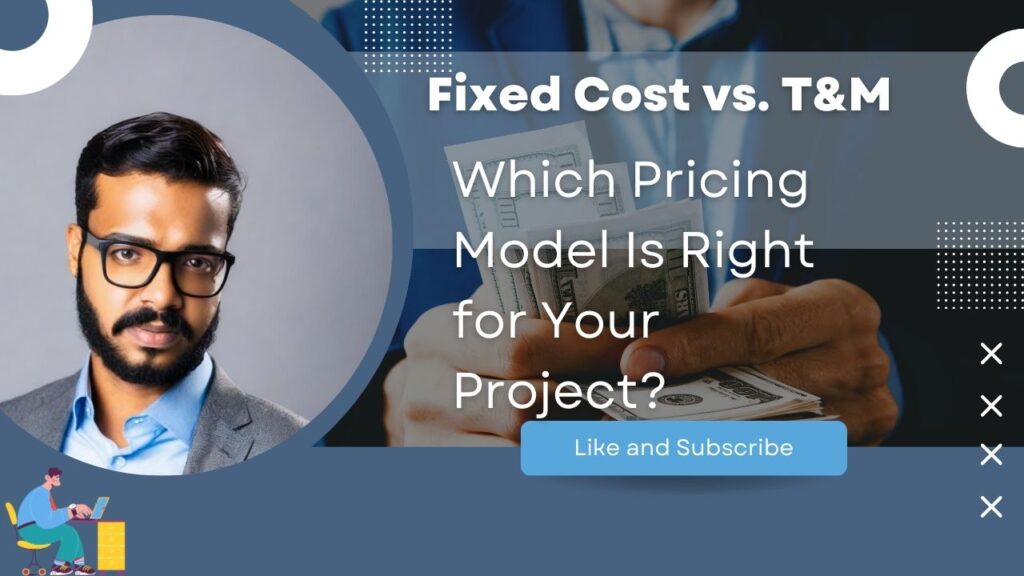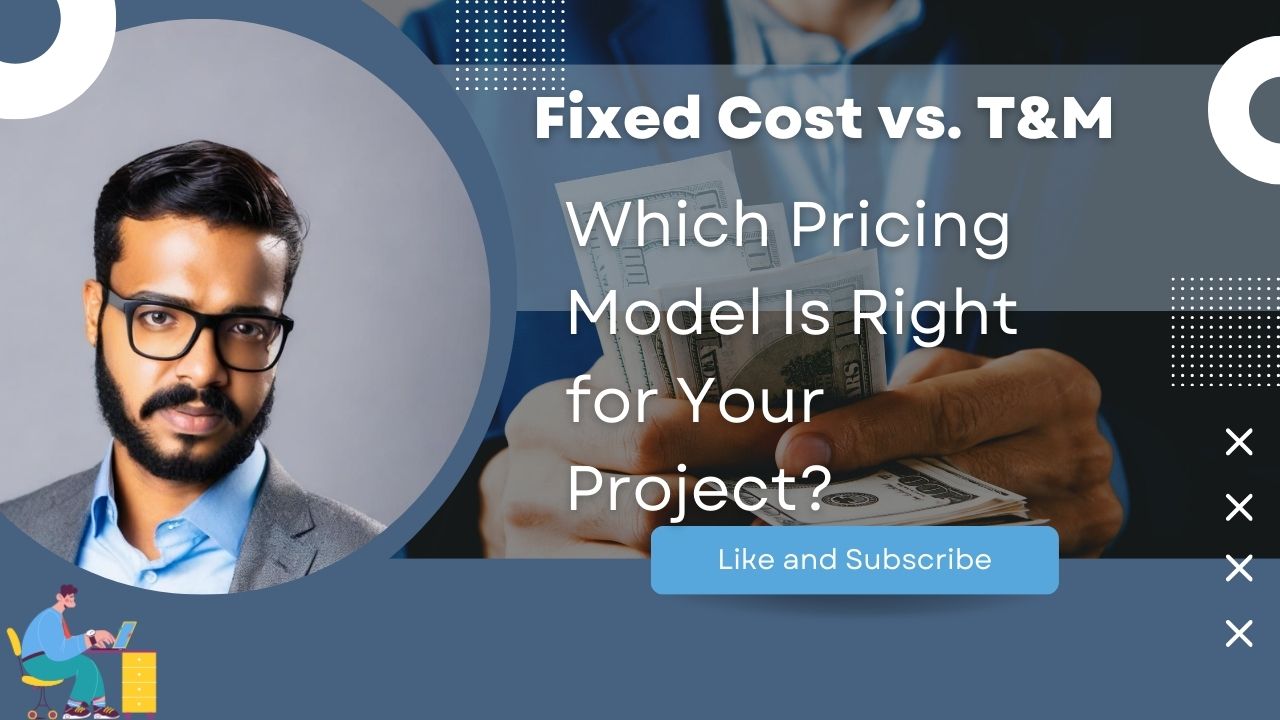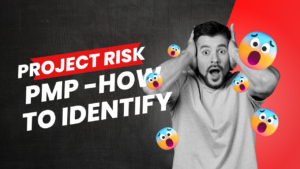Table of Contents
Introduction
fixed cost and time and materials- In the vast landscape of project management, two pricing models stand out: fixed cost and time and materials (T&M). These models serve as guiding principles, dictating how projects are scoped, budgeted, and executed. Let’s take a friendly stroll through the realm of project pricing and uncover the significance of choosing the right model for success.
A. Brief Overview of Fixed Cost and Time and Materials (T&M)
Fixed Cost: Imagine setting sail on a voyage with a predetermined ticket price. That’s fixed cost for you! In this model, the project cost is agreed upon upfront, regardless of the actual time or resources invested. It’s like ordering a pizza with a fixed price tag, no matter how many toppings you pile on.
Time and Materials (T&M): Now, picture visiting an all-you-can-eat buffet where you pay based on what you consume. That’s T&M! Here, costs fluctuate depending on the time spent and materials used, akin to paying for groceries based on weight at the checkout counter.
Example: fixed cost and time and materials
- Fixed Cost: Building a website for $5000, regardless of the time or effort invested.
- T&M: Hiring a consultant at an hourly rate of $50, with costs accumulating as the project progresses.
Key Point: While fixed cost offers predictability and clarity upfront, T&M provides flexibility and adaptability throughout the project lifecycle.

B. Importance of Selecting the Right Pricing Model for Project Success– fixed cost and time and materials
Choosing between fixed cost and T&M is akin to selecting the right tool for the job. The chosen model can significantly impact project outcomes, timelines, and stakeholder satisfaction. It’s akin to deciding whether to use a hammer or a screwdriver—each has its purpose, and choosing the wrong one can lead to subpar results.
Example: fixed cost and time and materials
- Fixed Cost: Ideal for projects with well-defined scopes and predictable requirements, such as building a standardized product or delivering a specific service.
- T&M: Suited for projects with evolving needs, research-based tasks, or those requiring frequent changes and iterations.
Key Point: Understanding the nature of the project, its requirements, and the level of flexibility needed are crucial factors in selecting the appropriate pricing model.
In the dynamic world of project management, the choice between fixed cost and T&M isn’t just about numbers—it’s about setting the stage for success and ensuring that every project journey begins on the right foot. So, as you embark on your next project adventure, remember to choose wisely and pave the way for smooth sailing ahead!
2. Understanding Fixed Cost
In the realm of project pricing models, fixed cost stands out as a tried-and-tested approach that offers both clarity and predictability. Let’s dive into what makes fixed cost contracts tick:
A. Definition of fixed cost pricing model
Fixed cost, as the name suggests, involves a predetermined sum agreed upon between the client and the service provider for the completion of a project. This sum remains constant regardless of the actual time or resources expended during the project execution.
Example: Imagine you’re a client looking to have a website developed. With a fixed cost contract, you and the developer agree on a set price for the entire project, regardless of how many hours or resources it takes to complete.
B. Characteristics and key features of fixed cost contracts
- Clear Scope: Fixed cost contracts typically come with a well-defined scope of work, outlining specific deliverables and milestones.
- Budget Certainty: Clients benefit from budget predictability, knowing the total cost upfront without unexpected expenses.
- Risk Allocation: The service provider assumes the risk of any cost overruns or delays, incentivizing efficiency and timely delivery.
Key Point: Fixed cost contracts are often preferred for projects with clearly defined requirements and deliverables, where both parties have a good understanding of the scope upfront.
C. Advantages and disadvantages of fixed cost pricing
- Advantages:
- Budget Control: Clients can budget effectively with a predetermined cost.
- Reduced Financial Risk: Service providers bear the risk of exceeding budget or timeline.
- Clear Expectations: Well-defined scope leads to clarity in project objectives.
- Disadvantages:
- Limited Flexibility: Changes to project scope may incur additional costs or renegotiation.
- Potential for Scope Creep: Inadequate initial planning may lead to unforeseen costs.
- Less Incentive for Innovation: Service providers may prioritize meeting requirements over innovation.
Example: Suppose a client engages a construction company to build a house with a fixed cost contract. If the client decides to add a swimming pool midway through construction, it could lead to additional costs and delays, as it falls outside the original scope.
In summary, fixed cost contracts offer predictability and clarity, making them suitable for projects with well-defined requirements and limited scope changes. However, they may lack the flexibility needed for more complex or evolving projects.
3. Exploring Time and Materials (T&M)
A. Definition of Time and Materials Pricing Model
Time and Materials (T&M) is a pricing model commonly used in project contracts where the client pays based on the actual time spent and materials used during the project’s execution. Unlike fixed cost contracts, where the price is predetermined and fixed regardless of the actual effort or resources expended, T&M contracts offer flexibility in billing.
Example: Suppose you hire a contractor to renovate your kitchen using a T&M contract. The contractor charges an hourly rate for labor and bills you for the materials purchased for the renovation. You pay for the actual hours worked by the contractor and the cost of materials used, providing transparency and flexibility in billing.
B. Key Components and Structure of T&M Contracts
- Hourly Rates: The contractor’s hourly rate for labor is a crucial component of T&M contracts. This rate may vary based on the expertise and skill level of the personnel involved in the project.
- Materials Cost: T&M contracts include provisions for reimbursing the contractor for the cost of materials used during the project. This ensures that the client pays for the actual materials consumed rather than a predetermined amount.
- Billing and Invoicing: T&M contracts typically involve periodic billing based on the hours worked and materials utilized. Detailed invoices provide transparency regarding the project’s progress and expenses.
Example: In a software development project using a T&M contract, the client pays the development team’s hourly rates for the time spent coding, testing, and debugging. Additionally, the client reimburses the team for any software licenses or third-party services procured during the project.
C. Pros and Cons Associated with Time and Materials Pricing
Pros:
- Flexibility: T&M contracts offer flexibility to accommodate changes in project scope or requirements, allowing for adjustments in billing based on actual work performed.
- Transparency: Clients have transparency into the project’s progress and expenses, as they are billed for actual hours worked and materials used.
- Adaptability: T&M contracts are suitable for projects with evolving or uncertain requirements, enabling teams to adjust resources and efforts as needed.
Cons:
- Cost Uncertainty: T&M contracts may lead to cost uncertainty for clients, as the final project cost depends on the actual hours worked and materials consumed.
- Potential for Overbilling: Without proper monitoring, T&M contracts can result in overbilling if hours are inaccurately reported or materials are mismanaged.
- Risk of Scope Creep: The flexibility of T&M contracts may lead to scope creep if project requirements are not adequately defined or managed.
Example: In a construction project utilizing a T&M contract, the client benefits from the flexibility to make changes to the design or materials used during the build. However, without proper oversight, the project runs the risk of exceeding the budget due to increased labor hours or material costs.
In summary, Time and Materials contracts offer flexibility and transparency but require careful monitoring to manage costs effectively and mitigate risks associated with scope changes or overbilling.
4. Factors to Consider When Choosing Between fixed cost and time and materials
When deciding between a fixed cost and time and materials (T&M) pricing model for your project, several key factors come into play. Let’s explore these factors in detail:
A. Project Scope and Requirements: fixed cost and time and materials
- Understanding the scope and requirements of your project is crucial in determining the appropriate pricing model.
- Example: For projects with well-defined scope and deliverables, a fixed cost model may be more suitable as it provides clarity on project costs upfront.
- Key Point: Assess the level of detail in project specifications to determine if a fixed cost model aligns with the project’s scope.
B. Budget Constraints and Financial Considerations: fixed cost and time and materials
- Consider your budget constraints and financial resources when choosing between fixed cost and T&M.
- Example: If you have a strict budget with little room for flexibility, opting for a fixed cost model can help control costs and provide predictability.
- Key Point: Evaluate your financial situation and assess whether a fixed cost or T&M model offers better financial stability for your project.
C. Flexibility and Adaptability Needed for Project Changes: fixed cost and time and materials
- Evaluate the level of flexibility and adaptability required for your project, considering potential changes in requirements or scope.
- Example: Projects with evolving requirements or research-based tasks may benefit from the flexibility offered by a T&M model, allowing for adjustments as the project progresses.
- Key Point: Determine the extent to which your project may undergo changes and choose a pricing model that accommodates such flexibility.
D. Risk Management and Mitigation Strategies: fixed cost and time and materials
- Assess the risks associated with your project and consider how each pricing model addresses risk management.
- Example: Fixed cost contracts shift the risk to the vendor, providing assurance to the client regarding project costs. On the other hand, T&M contracts may involve shared risk, with both parties adapting to changes as they occur.
- Key Point: Identify potential risks, such as scope creep or budget overruns, and select a pricing model that aligns with your risk tolerance and mitigation strategies.
By carefully considering these factors—project scope, budget constraints, flexibility, and risk management—you can make an informed decision on whether a fixed cost or T&M pricing model is the right fit for your project. Remember, each project is unique, so weigh your options thoughtfully to ensure project success and client satisfaction.
5. Case Studies: Examples of When to Use Fixed cost and Time and materials
A. Scenario 1: Fixed cost suitable for well-defined projects with clear scope
In this scenario, fixed cost pricing is the preferred option for projects that have a clearly defined scope and deliverables. Let’s consider the example of a website development project. The client provides detailed specifications outlining the design, features, and functionalities required for the website. With a clear understanding of the project requirements, the development team can confidently estimate the time and resources needed to complete the project.
Key Points:
- Clear Scope: Fixed cost contracts are advantageous when the project scope is well-defined and unlikely to change significantly.
- Predictable Budget: Clients benefit from knowing the total project cost upfront, providing financial predictability.
- Project Management: With a fixed cost contract, the development team is incentivized to deliver the project within the agreed-upon budget and timeline.
Example: A client hires a software development agency to create a mobile application with specific features and functionalities. The agency provides a fixed cost proposal based on the project requirements and agrees to deliver the completed app within a set timeframe. Throughout the project, the scope remains unchanged, and the client receives regular updates on progress. The project is completed within the agreed budget and timeline, satisfying both the client and the development team.
B. Scenario 2: T&M ideal for projects with evolving requirements or research-based tasks
In contrast, time and materials (T&M) pricing is best suited for projects with evolving requirements or tasks that involve research and experimentation. Consider a scenario where a client wants to develop a prototype for a new product but is unsure of the exact features and functionalities required. In this case, a T&M contract provides the flexibility needed to adapt to changing requirements and explore different approaches.
Key Points:
- Flexibility: T&M contracts offer flexibility, allowing for changes and adjustments throughout the project lifecycle.
- Research and Development: Projects that involve research, experimentation, or uncertain requirements can benefit from the T&M model.
- Client Involvement: Clients have greater involvement in the development process and can provide feedback and direction as the project progresses.
Example: A company engages a marketing agency to conduct market research and develop a new advertising campaign. The scope of the project is not fully defined, and the client wants the flexibility to explore different strategies and approaches. The agency agrees to a T&M contract, and the project evolves as new insights are gained from the research. The client actively participates in the decision-making process, providing feedback and guidance along the way. As a result, the campaign is tailored to meet the client’s objectives effectively
6. Best Practices for Implementing Fixed cost and Time and materials
A. Establishing Clear Project Goals and Scope– fixed cost and time and materials
In any project, clarity is key. Before diving into any agreement, it’s essential to establish clear project goals and scope. This means defining what needs to be accomplished, the resources required, and the expected outcomes. For fixed cost projects, this involves outlining the deliverables and milestones upfront to ensure both parties are aligned. In contrast, with T&M projects, the scope may evolve over time, but setting initial expectations helps guide the process.
Example: Let’s say you’re developing a website. For a fixed cost project, you would specify the number of pages, features, and design elements upfront. In a T&M scenario, you might start with a basic outline and gradually add features based on client feedback.
B. Effective Communication and Collaboration with Stakeholders– fixed cost and time and materials
Communication is the cornerstone of successful project management. Whether you’re working with a fixed cost or T&M model, maintaining open and transparent communication with stakeholders is crucial. For fixed cost projects, clear communication helps prevent scope creep and ensures deliverables meet expectations. In T&M projects, ongoing collaboration allows for flexibility and adjustments as needed.
Example: In a fixed cost website development project, regular check-ins with the client ensure that the design and functionality align with their vision. In a T&M scenario, continuous communication allows for iterative improvements based on user feedback.
C. Monitoring and Managing Project Progress and Costs– fixed cost and time and materials
Keeping a close eye on project progress and costs is essential for staying on track. For fixed cost projects, monitoring progress against milestones helps ensure timely delivery within budget constraints. In T&M projects, tracking hours worked and expenses incurred allows for accurate billing and cost control. Utilizing project management tools and regular status meetings can aid in monitoring progress and identifying any potential issues early on.
Example: Using project management software, you can track the number of hours spent on each task in a T&M project to ensure it aligns with the agreed-upon budget. Similarly, in a fixed cost project, milestone tracking ensures that deadlines are met and deliverables are completed within the allocated budget.
D. Negotiating Terms and Agreements That Align with Project Needs– fixed cost and time and materials
When entering into a fixed cost or T&M arrangement, it’s essential to negotiate terms and agreements that align with the project’s needs and objectives. This includes defining payment schedules, milestones, and any change management processes upfront. For fixed cost projects, clearly outlining deliverables and acceptance criteria helps mitigate risks and avoid disputes. In T&M projects, establishing hourly rates, billing cycles, and approval processes ensures transparency and accountability.
Example: In a fixed cost project, negotiating a payment schedule tied to specific milestones ensures that both parties are incentivized to meet deadlines. In a T&M arrangement, outlining a change request process helps manage scope changes and avoid unexpected costs.
By following these best practices, organizations can effectively implement fixed cost and T&M models, leading to successful project outcomes and satisfied stakeholders. Whether you’re embarking on a website development project or launching a new product, adopting these practices can help navigate the complexities of project management with confidence.
8. Conclusion– fixed cost and time and materials
A. Summary of key points discussed– fixed cost and time and materials
Throughout this exploration of fixed cost and time and materials (T&M) pricing models, we’ve gained valuable insights into their characteristics, advantages, and considerations for implementation. We’ve learned that fixed cost contracts offer predictability and clarity, making them suitable for well-defined projects with stable requirements. On the other hand, T&M contracts provide flexibility and transparency, making them ideal for projects with evolving scopes or research-based tasks. By understanding the differences between these two models, project managers can make informed decisions to optimize project outcomes.
Example: Imagine you’re planning to develop a website for your business. If you have a clear vision of the website’s features and functionalities, a fixed cost contract may be more appropriate. However, if you anticipate frequent changes or additions during the development process, opting for a T&M contract would provide the flexibility needed to accommodate these revisions.
B. Guidance on selecting the appropriate pricing model based on project requirements
When deciding between fixed cost and time and materials pricing models, it’s essential to carefully assess the project’s scope, budget, and flexibility requirements. For projects with well-defined scopes and stable requirements, a fixed cost contract may offer cost certainty and peace of mind. Conversely, for projects with evolving scopes or uncertain requirements, a T&M contract provides the flexibility to adapt to changes and optimize resources accordingly. Ultimately, the key is to align the pricing model with the project’s objectives and constraints to ensure successful delivery.
Example: Let’s say you’re outsourcing the development of a mobile app for your startup. If you have a limited budget and a clear vision of the app’s features, opting for a fixed cost contract could help you control costs and manage expectations. However, if you anticipate frequent iterations or enhancements based on user feedback, a T&M contract would allow for continuous improvement and responsiveness to market needs.
C. Encouragement for further exploration and implementation of fixed cost and time and materials pricing models in project management
As project management continues to evolve, it’s essential for professionals to stay informed about different pricing models and their implications. By further exploring fixed cost and time and materials pricing models, project managers can enhance their ability to effectively manage projects, optimize resources, and deliver value to stakeholders. Whether you’re a seasoned project manager or just starting out in your career, embracing a deeper understanding of pricing models can contribute to your success and growth in the field.
Example: Consider attending workshops, webinars, or online courses focused on project management and pricing strategies. Engage with industry peers and experts to exchange insights and best practices. By continuously learning and refining your skills, you’ll be better equipped to navigate the complexities of project management and drive successful outcomes for your organization.
In conclusion, by leveraging the appropriate pricing model—whether fixed cost or time and materials—project managers can effectively manage resources, mitigate risks, and deliver value to stakeholders. Embrace the journey of exploration and implementation, and unlock the full potential of project management in driving organizational success.



